Art & Exhibitions
Ambitious ‘Wasteland’ Exhibition Brings Contemporary LA Artists to Paris
The Mona Bismarck American Centre in Paris gets a new lease on life.
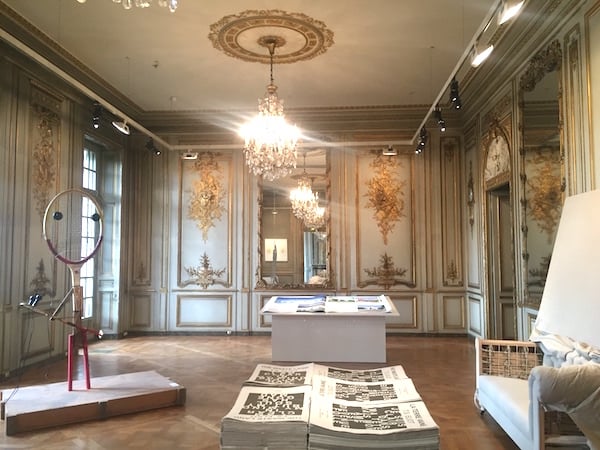
Photo: Courtesy LAND.
The Mona Bismarck American Centre in Paris gets a new lease on life.

Laura van Straaten

When the exhibition “Wasteland: New Art from Los Angeles” opens this weekend at two venues in Paris, it will be a first collaboration for an unusual triumvirate: one of Paris’ most prominent commercial art galleries with two nonprofit culture organizations of very different character and heritage.
One of the venues is Galerie Thaddaeus Ropac’s sprawling arts complex in the industrial area of Pantin, on the outskirts of Paris. The other venue is the non-profit Mona Bismarck Center for American Culture, a heretofore somewhat sleepy institution located in a palatial 19th century hôtel particulier right on the Seine in the posh but staid 16ème.
But it’s Shamim Momin, founding curator for the nonprofit public arts projects Los Angeles Nomadic Division (LAND), who generated the idea for the exhibit and who chose the 14 LA-based artists whose work will be split between the two locations, nearly six miles apart.
“What we do at LAND is commission contemporary artists with the opportunity for site-specific projects that wouldn’t make so much sense within a museum or gallery context and provide them with venues that are inspirational,” says Momin, who spent a decade at the Whitney Museum, co-curating two biennials there.
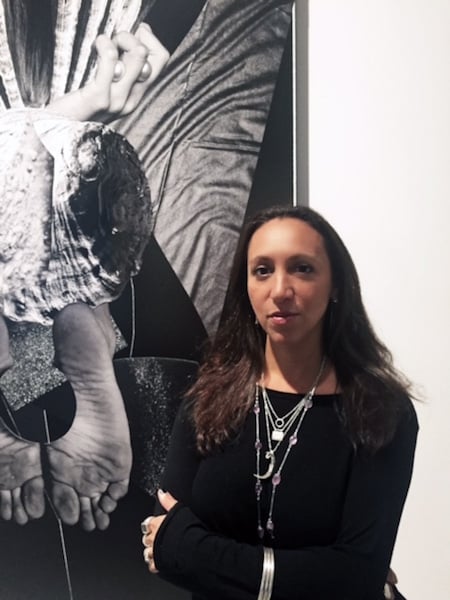
Shamim M. Momin, curator of “Wasteland,” in front of a work by Fay Ray at Galerie Thaddaeus Ropac, Pantin.
Photo: Courtesy LAND.
“Since I moved to LA and started LAND in 2009, I’ve been talking to Thaddaeus about doing a project in Paris that would help represent what LAND does,” Momin explains in tracing how the trio of organizations came together. “When he opened the exhibition space Pantin, he asked if I wanted to do something out there. I said ‘Yes!’ but that I’d like to engage other spaces too.”
Momin says she approached the Bismarck Center, which was not primarily associated with contemporary arts programming at the time. But the Center was in the process of hiring its first artistic director, Raina Lampkins-Fielder, a Paris-based American who had overseen public programs and education at the Whitney and worked for more than 15 years in museums, including the Brooklyn Museum of Art, the New Museum, and the Andy Warhol Museum.
“When Raina got the job, that sealed the deal because I knew her from our days at the Whitney and we have similar ideas about contemporary art,” Momin explains. “I knew she wanted to reconfigure the identity of Bismarck to be about innovative contemporary art.”
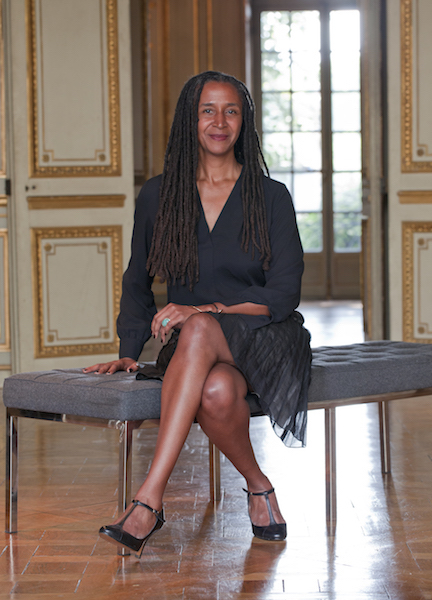
Raina Lampkins-Fielder, artistic director of the Mona Bismarck Center for American Culture in Paris.
Photo: Ana Bloom, courtesy of the Mona Bismarck Center.
The title and thematic thread comes from T.S. Eliot’s modernist poem, The Waste Land, published in 1922. The exhibition catalog describes that historical moment after World War I, as “a moment of disturbing parallel to the present,” ticking off disillusionment with the world politically, culturally, and individually (e.g. the increasing loss of “true” communication, connection, and faith).
The exhibit title also evokes the LA’s longtime reputation as a cultural wasteland, especially as linked to, created through, and sometimes even explored in Hollywood (in films like The Player, Crash … etc.). Momin notes that French theorists such as Guy Debord and the late Jean Baudrillard see LA as epitomizing the worst of modern image culture, where images and fakery replace what is real, perhaps even typifying the whole of American culture.
Momin specifically sought artists making work in response to the modern city that address the poetics of despair, the search for connectivity, the tenuous state of morality, and questions about the future.
Mark Bradford is the most internationally recognized among the participating artists, a group that includes Edgar Arceneaux, Lisa Anne Auerbach, Math Bass, Sam Falls, Daniel Joseph Martinez, Jonathan Pylypchuk, Fay Ray, Ry Rocklen, Amanda Ross-Ho, Analia Saban, Brenna Youngblood, and the artistic team of Shannon Ebner and Erika Vogt.
Each artist has made a newly commissioned work or recombined works. “And each artist is represented in both venues because part of what we wanted to do was have the conversation exist across both venues,” says Momin.
Martinez’s work at Bismarck responds most obviously to Eliot, matching titles from each of the five section of the poem to a different moment in French history. But Bradford’s work may well be the showstopper, with one of his most site specific pieces to date, a “spout” of textile and collage that drapes from the top of the venue’s three-story staircase. The work is comprised of strips of canvas layered with paper, pigment, collage, and other materials.
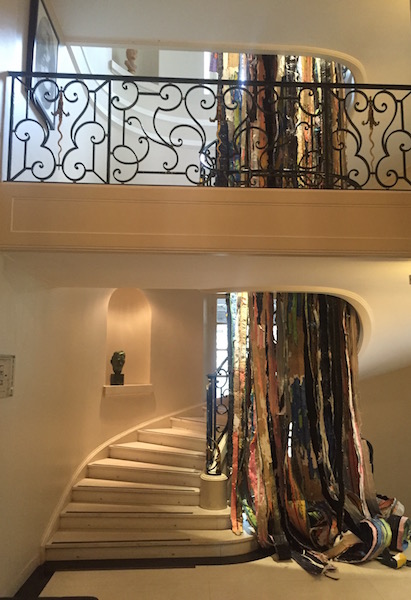
Mark Bradford, A Private Stranger Thinking About His Needs (2016).
Photo: Courtesy the Artist and Hauser & Wirth.
LAND has a lot at stake in the project given that it’s the organization’s first undertaking outside the US, which is now in its sixth year of programming. And Momin says that a chief goal over the next five years is “to develop the ‘nomad’ aspect” of her organization’s mission, with more international and traveling projects.
But, more than anything, the show represents a coming out party, if not a born-again baptism, for the Bismarck Center, whose public programs have been uneven as well: Pamela Druckerman, the popular author of books on parenting and adultery one day; establishment types like Robert Storr and Philippe de Montebello the next; all interspersed with influential 21st century artists and cultural producers like Daniel Arsham, Jonah Bokaer, Nico Muhly, Taryn Simon, and Pharrell Williams.
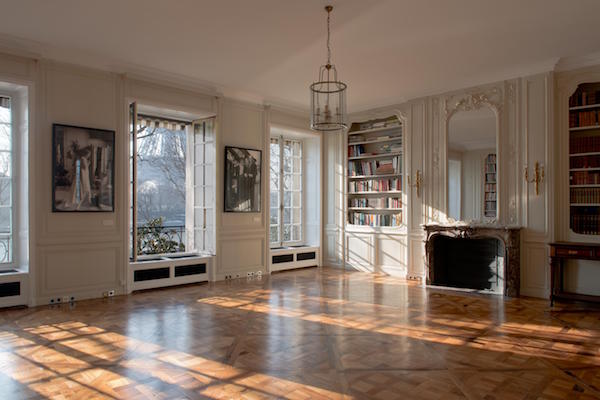
Library at the Mona Bismarck American Center, Paris.
Photo: Courtesy of 4D4 Espaces Ephémères.
Lampkins-Fielder’s mission is to develop and bring in programming more in the last category, and on a consistent basis. She elaborated as she walked a visitor through the Baroque-style ballrooms to admire the Center’s the view of the Eiffel Tower from its front rooms.
“I’m not talking about hot dogs, baseball, and bagels,” she explained, referencing last autumn’s show “Brooklyn: Rive Gauche” at Paris’ Bon Marché department store and offerings on American jazz at Paris’ Musée du Quai Branly, “I want to go beyond that.”
Case in point is what Lampkins-Fielder has planned for 2017. She’s bringing to the Bismarck “Posing Beauty in African American Culture,” an exhibit that explores the contested ways in which African-American aesthetics have been represented in historical and contemporary context. The show—which originated in New York and traveled throughout the USA—takes as its launch pad W. E. B. Du Bois’s “American Negro” exhibit in the 1900 Paris Exposition, and traces a particular historical relationship between France and African Americans. Artists in that show include Carrie Mae Weems, Garry Winogrand, Anthony Barboza, Mickalene Thomas, Gordon Parks, Edward Curtis, and Lyle Ashton Harris.
“We will give it a Mona Bismarck touch so it will be sculpted for our space and audience and certainly the programming around it will include film and image-makers in Paris to expand the visual conversation of the show,” Lampkins-Fielder says.
“That conversation around ideas of Blackness is not a new one in France, but this will be the first time it is explored from a distinctly American revisionist perspective in Europe,” she laughs, ”And of course, everybody loves to go to a show about Black people here!”
She notes that in presenting “Posing Beauty,” Bismarck will be bringing to Paris for the first time the much-lauded curatorial work of MacArthur “genius grant” winner Deborah Willis, who chairs the photography department at New York University’s Tisch School of the Arts. “In fact, this will likely be the first show in Paris curated by an African-American about race,” she added.
A key challenge for the Bismarck Center as it reinvents itself may be that France has a very different point of view on America than it did when Mona Bismarck died more than 30 years ago. The number of people who love Americans and America because they remember the US role as France’s savior in World War II is dwindling. And those think of America that way—the way America often likes to think of itself—do so largely because American cultural exports have played that up.
Today, the conversation between the two distinct cultures is rooted in a joint efforts to combat terrorism, to contend (albeit in different ways) with poly-ethnic and poly-religious societies, and to try to understand each nation’s place amidst a common global popular culture, against which for decades a strong barrier of French policy had been built, but which has increasingly proved to be perforated, as interest in “Wasteland” may prove.
“Wasteland” is on view March 12 through July 17 in Paris, at the Mona Bismarck American Center for Art and Culture and Galerie Thaddaeus Ropac Pantin.